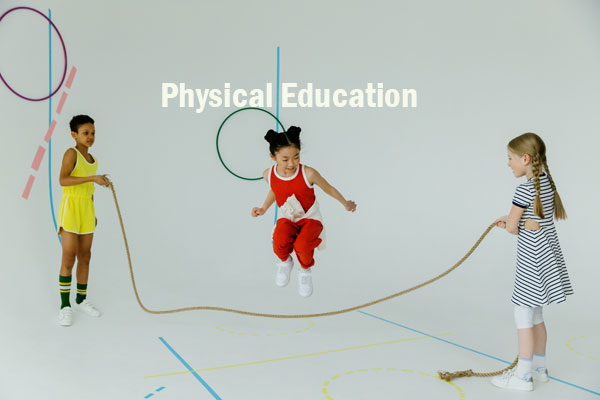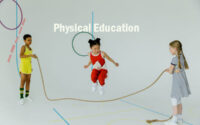Physical Education Model Question Papers
Download all Physical Education Model Question Papers here. The Candidates who are applying for Physical Education vacancies, need to start their preparation by downloading Model Question Papers. For that purpose, we are providing Physical Education Model Question Papers.

We have given the solutions for Model Question Papers to make your preparation efficient. Click here to Download the Model Question Papers from the attached pdfs. The Physical Education Model Question Papers attached in the PDF Format so the aspirants can download quickly.
Along with these Physical Education Model Question Papers, we have attached Physical Education Syllabus and Exam Pattern. Students of class 11 and class 12 also download these Model Question Papers for their examination preparation. These Physical Education Model Question Papers are also be helpful for AQA GCSE examination. Applicants of TRB or TET may use this Physical Education Model Question Papers.
Model Question Papers on Physical Education
1. Which of the following describes a mental benefit of Physical Activity ?
(A) Enhancing body shape
(B) Understanding of rules
(C) Relieving stress-tension
(D) Developing friendship
2. Plato is referred to as the father of :
(A) Idealism
(B) Realism
(C) Pragmatism
(D) Naturalism
3. An activity which is voluntary, separate, uncertain, economical and rule governed is called :
(A) Game
(B) Play
(C) Sport
(D) recreation
4. Man’s most potent socialization process is :
(A) social interaction
(B) social courtesy
(C) social visits
(D) social understandings
5. Which of the following city has no regional centre of National Institute of Sports ?
(A) Bengaluru
(B) Lucknow
(C) Patiala
(D) Kolkata
6. Locomotion and heat production are the functions of this system :
(A) skeletal system
(B) muscular system
(C) respiratory system
(D) cardiovascular system
7. Which of the following is known as the trunk line of nervous system ?
(A) Synapse
(B) Hypothalamus
(C) Gangalia
(D) spinal cord
8. The integration of electrical activity, muscle contraction, and change in volume, pressure and flow are integral components of :
(A) cardiac output
(B) single cardiac cycle
(C) cardiac hypertrophy
(D) stroke volume
9. In hypoxia, too little oxygen reaches the :
(A) Brain cell
(B) Heart
(C) Tissue
(D) Lungs
10. Food or food component which improves the capability of an athlete to enhance his performance is called :
(A) Ergogenic aids
(B) Diuretics
(C) Beta blockers
(D) Anabolic steroids
11. Following are the direct physiological consequences of warm-down activities following vigorous physical activity except :
(A) Prevention of blood pooling in the legs
(B) Increasing the rate of lactic acid removal
(C) Promotion of reduction of cholesterol in the blood
(D) Reducing the risk of cardiac irregularities
12. The maximal amount of air that is ventilated in a single inspiratory expiratory cycle is called :
(A) tidal volume
(B) inspiratory reserve volume
(C) vital capacity
(D) expiratory reserve volume
13. If a body is about to have a free fall, it will accelerate every second at :
(A) 64 ft/sec
(B) 90 ft/sec
(C) 32 ft/sec
(D) 24 ft/sec
14. When centrifugal and centripetal forces balance each other, then the hammer will :
(A) Slow down
(B) Move faster
(C) Remain in rotation
(D) Not move at all
15. Which of the following is not an example of static balance ?
(A) Standing in place on a balance beam
(B) Maintaining a handstand position
(C) Skipping across a gymnasium
(D) Performing hula hoop for 3 seconds
16. Newton’s third law of motion is called :
(A) Law of action and reaction
(B) Law of inertia
(C) Law of momentum
(D) Law of gravity
17. Learning about sport rules, tradition and history falls under the following domain of learning :
(A) Affective
(B) Cognitive
(C) Psychomotor
(D) Associative
18. Peak performance in sports demands this level of arousal :
(A) Minimum
(B) Maximum
(C) Optimal
(D) High
19. Practice of and perfection in a motor skill is basically a function of :
(A) observation process
(B) insight process
(C) conditioning process
(D) trial and error process
20. A holistic approach to injury rehabilitation emphasizes healing in :
(A) both mind and body
(B) only the mind
(C) only the body
(D) only the injury
| GK | Practice Set |
| MCQ | Mock Test |
| Selected Question | Previous Question |
| Typical Question | Old Papers |
| Test Papers | Sample Question |
| Important Questions | Model Question |
| Question Bank |
21. Purposefully developed plans for the transaction of curriculum content is called :
(A) Programming
(B) Teaching
(C) Planning
(D) Instruction
22. The elementary school curriculum should stress on :
(A) Movement education
(B) Skill education
(C) Fun education
(D) Fitness education
23. The most obvious role for physical education teachers should be :
(A) Event manager
(B) NCC officer
(C) Director cultural activities
(D) Teaching
24. The type of practice used in teaching an open skill is usually :
(A) Fixed practice
(B) Massed practice
(C) Variable practice
(D) Distributed practice
25. Which of the following is not a risk factor in cardio-vascular disease ?
(A) Physical activity
(B) Overweight
(C) High fat diet
(D) Heredity
26. Carboloading used by athletes means :
(A) Spending energy during physical workout
(B) Generating energy per unit of time
(C) Getting energy from blood
(D) Storing energy in muscles
27. The technical term used for a pear shaped individual is :
(A) Gynoid
(B) Android
(C) Hyoid
(D) Sphenoid
28. The term ‘wellness’ means :
(A) Active lifestyle
(B) Optimal health and vitality
(C) Absence of disease
(D) Physical fitness
29. Following the training principle of specificity a good cyclist must :
(A) squat with heavy load
(B) continuously run
(C) only cycling
(D) train at high altitudes
30. Which of the following statements is false ?
(A) Strength training increases muscle tone
(B) Strength training increases risk of injuries
(C) Strength training increases performance
(D) Strength training increases muscle mass
31. The maximum heart rate that should characterize students’ exercise for health related fitness in physical education class is :
(A) 25-40% of maximum heart rate
(B) 40-60% of maximum heart rate
(C) 60-85% of maximum heart rate
(D) 85-100% of maximum heart rate
32. The ability to transfer energy swiftly into force :
(A) Speed
(B) Strength
(C) Agility
(D) Power
33. A factor that could affect the relationship between the independent and dependent variables, but that is not included or controlled is called,
(A) Extraneous variable
(B) Controlled variable
(C) Intervening variable
(D) Independent variable
34. A possible shortcoming or influence that cannot be controlled by the investigator is called :
(A) Delimitation
(B) Limitation
(C) Scope
(D) significance
35. Generalisation of results to some larger group is called :
(A) Inference
(B) Conclusion
(C) Results
(D) Recommendation
36. A statistical technique to assess differences between two groups is :
(A) t-test
(B) Correlation
(C) ANOVA
(D) ANCOVA
37. Survey method that involves establishing norms for abilities, performances and attitudes is called a :
(A) Normative survey
(B) Historical survey
(C) Market survey
(D) Delphi survey
38. A hypothesis stating no difference is also known as :
(A) Research hypothesis
(B) Statistical hypothesis
(C) Null hypothesis
(D) Alternative hypothesis
39. A standard zigzag course is set up with four cones placed on the corners of a rectangle. The athlete runs a course in the shortest possible time. The test measures :
(A) Power
(B) Aerobic capacity
(C) Agility
(D) Strength
40. A judgement conducted near the end of an instruction or training program is called :
(A) Summative evaluation
(B) Formative evaluation
(C) Continuous evaluation
(D) Spot evaluation
41. AAHPERD Basketball skill test does not include :
(A) Speed spot shooting
(B) Controlled dribble
(C) Defensive movement
(D) Forward pass
42. Spirometer is used to measure :
(A) Lung volumes
(B) Body volume
(C) CO2 volume
(D) O2 volume
43. The following practice alternative would best promote motor learning and safety in pole vaulting :
(A) Whole
(B) Part
(C) Progressive part
(D) Distributed
44. Which of the following activities would require a conditioning component in the lesson plan ?
(A) Javelin throw
(B) Mass Drill
(C) Drill machine
(D) Flag drill
45. ‘Bonus point’ is a term associated with :
(A) Kabaddi
(B) Kho-kho
(C) Wrestling
(D) Boxing
46. Review of decisions is allowed in the games of :
(A) Hockey and football
(B) Cricket and football
(C) Hockey and cricket
(D) Tennis and Badminton
47. (1) ‘‘Now-a-days athletes demand huge amounts of money all over the world in football, baseball, cricket and basketball.’’
(2) From the statement one is able to deduce that players are highly valued in a few selected sports :
(A) (1) is correct but (2) is wrong
(B) Both (1) and (2) are correct
(C) (1) is wrong but (2) is correct
(D) Both (1) and (2) are wrong
48. (1) ‘‘Wellness alone cannot become the central concept underlying life span sport, fitness and physical education.’’
(2) Children need to start at an early age to attend educationally sound programs that emphasize behaviour change.
(A) (1) is correct but (2) is wrong
(B) Both (1) and (2) are correct
(C) (1) is wrong but (2) is correct
(D) Both (1) and (2) are wrong
49. Which of the following countries has influenced the development of Physical Education in the 20th Century ?
(A) United Kingdom
(B) Denmark
(C) U.S.A.
(D) Germany
50. Presently the primary objective of Physical Education is the development of :
(A) Motor fitness
(B) Health related fitness
(C) Character
(D) Personality

